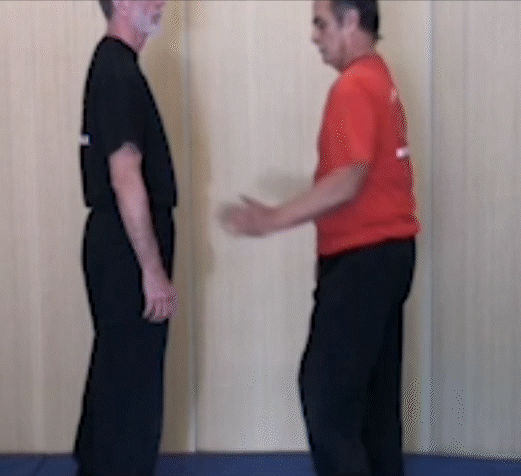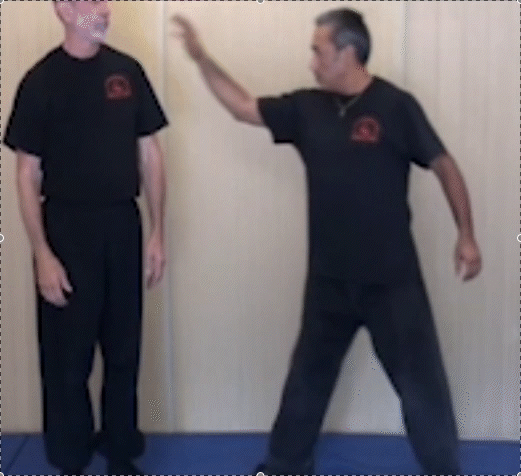 Image 1 of 3
Image 1 of 3

 Image 2 of 3
Image 2 of 3

 Image 3 of 3
Image 3 of 3




ORANGE BELT 1 , [STANDING JIU JITSU LOCKS & HOLDS]
If you wish to purchase all three videos of the Orange Belt charts, use promo code “ORANGEBELT” to get 15% off at checkout.
Orange belt charts are comprised of the most basic and fundamental simple standing Jiu-Jitsu techniques done singularly.
In the third chart “slipping set I - locks” we put some of the first and second charts techniques into a continuous hands-on sequence to demonstrate how one might flow into combinations of natural and spontaneous opportunities. All of these charts should be practiced on both the left and the right sides with a partner and with the eyes open and closed.
Repetition will develop sensitivity in both softness and hardness, and reinforce muscle memory. Safety is awareness. Remember to communicate through your tap. A light tap acknowledges right mechanics and leverage. A medium or hard tap announces the intensity of your technique or pain level. And lastly, remember to “cover out” . Distance yourself from your opponent immediately after executing your response. Whether or not you choose to add appropriate follow-ups is dependent upon the severity of the encounter.
ORANGE BELT I - LOCKING TECHNIQUES (LOCKS)
1. Straight Across Wrist Grab (Finger Lock)
2. Come-A-Long (Backstop - Wrist Lock)
3. Lapel Grab (Chicken Wing - Wrist Lock)
4. Cross-Hand Wrist Grab (Chicken Wing - Wrist Lock)
5. Straight Across Wrist Grab (Shoulder Lock)
6. Hand Shake (Reverse - Wrist Lock)
7. Face Push (Palm Slap - Elbow Break)
8. Cross-Hand Wrist Grab (Forearm Elbow Lock)
9. Lapel Grab (Arm Bar - Elbow Lock)
10. Two Hand Wrist Grab (Step Through - Wrist LockTake down)
11. Hands on Hips (Reverse Shoulder Lock)
12. Side Lapel Grab (Front Shoulder Lock)
If you wish to purchase all three videos of the Orange Belt charts, use promo code “ORANGEBELT” to get 15% off at checkout.
Orange belt charts are comprised of the most basic and fundamental simple standing Jiu-Jitsu techniques done singularly.
In the third chart “slipping set I - locks” we put some of the first and second charts techniques into a continuous hands-on sequence to demonstrate how one might flow into combinations of natural and spontaneous opportunities. All of these charts should be practiced on both the left and the right sides with a partner and with the eyes open and closed.
Repetition will develop sensitivity in both softness and hardness, and reinforce muscle memory. Safety is awareness. Remember to communicate through your tap. A light tap acknowledges right mechanics and leverage. A medium or hard tap announces the intensity of your technique or pain level. And lastly, remember to “cover out” . Distance yourself from your opponent immediately after executing your response. Whether or not you choose to add appropriate follow-ups is dependent upon the severity of the encounter.
ORANGE BELT I - LOCKING TECHNIQUES (LOCKS)
1. Straight Across Wrist Grab (Finger Lock)
2. Come-A-Long (Backstop - Wrist Lock)
3. Lapel Grab (Chicken Wing - Wrist Lock)
4. Cross-Hand Wrist Grab (Chicken Wing - Wrist Lock)
5. Straight Across Wrist Grab (Shoulder Lock)
6. Hand Shake (Reverse - Wrist Lock)
7. Face Push (Palm Slap - Elbow Break)
8. Cross-Hand Wrist Grab (Forearm Elbow Lock)
9. Lapel Grab (Arm Bar - Elbow Lock)
10. Two Hand Wrist Grab (Step Through - Wrist LockTake down)
11. Hands on Hips (Reverse Shoulder Lock)
12. Side Lapel Grab (Front Shoulder Lock)
